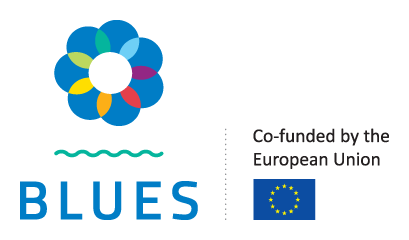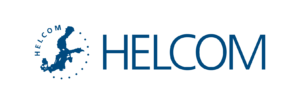
Ieva Putna-Nimane and Marta Barone are experts involved in Activity 3.2 (the progress development of microlitter indicator) from Latvian Institute of Aquatic Ecology, a research organisation focusing on functioning and health of marine and freshwater ecosystems. Ieva is a researcher, an expert in ecotoxicology, turning increased attention to marine and coastal microplastics pollution and its effects on the environment over the last years. She is also a member of the HELCOM Expert Group on Marine Litter (EG-Marine litter). Marta is a research assistant and PhD student working on observations of microplastic pollution in the Baltic Sea and freshwater environments.
What is your Activity/Task in HELCOM BLUES all about? What main challenges and/or pressures on the Baltic Sea does it try to solve?
Within the HELCOM BLUES project we are part of the Activity 3 on “Support for and harmonisation of regional work on Descriptor 10 (marine litter), sub-task 3.2 on “Progress development of microlitter indicator”.
Together with Marta Ruiz from HELCOM and our German colleagues Elke Fischer, Matthias Schwarz, Madina Dolle and Laura Polt and Ieva Putna-Nimane and Marta Barone we address microlitter in both surface water and seabed sediments. The focus of the HELCOM BLUES working group at the Latvian Institute of Aquatic Ecology is to further develop the microlitter indicator in the water column.
The particular challenge of the microlitter indicator is that only few HELCOM countries have yet established a respective monitoring programme. Therefore, data on microlitter in surface water that would allow an assessment of whether the status of our marine environments is improving or worsening over time are still insufficient. Furthermore, no harmonised protocol on how microlitter is to be monitored in our marine ecosystems has been established. The high variability of methods currently in use or planned bears the risk of generating non-comparable data that do not provide a robust data set for statistical analysis.
What are the planned outcomes of your specific BLUES Activity/Task?
A central task and outcome of Activity 3.2 on microlitter is the development of guidelines that can be implemented by all HELCOM countries and that are compatible with EU-level monitoring requirements from MSFD and harmonized with strategies within other regional sea conventions. Here we are not aiming to provide one strict recipe to be followed by all but to provide kind of a common framework with reliable options for sampling, analysis and data generation for microlitter in water column that are feasible to all HELCOM countries. The main outcome of the Activity 3.2 is the creation of universal monitoring guidelines for microlitter in the water column containing recommendations for microlitter sampling, treatment, analysis and data handling methods. The guidelines are based on real experiences obtained from Baltic Sea Region states using several surveys on the currently applied methods, existing or planned monitoring strategies. This allowed us to make them in a more flexible way, so that everyone interested in monitoring microlitter could do so in a common and reasonable manner.
How will your BLUES Activity/Task benefit your organization in particular and the Baltic Sea in general?
The HELCOM BLUES project gives us the great opportunity to address the identified problems with experts from HELCOM Contracting Parties and to find participatory and transparent solutions. It is highly useful and valuable here to build an ongoing and active HELCOM network on the topic of microlitter.
This task provided valuable insights on how we can improve our microlitter monitoring methods – we got acquainted to the methods used by others, from which we can choose the best to modify our own. This moves us forward in the direction of more united and comparable Baltic Sea microlitter monitoring system.

